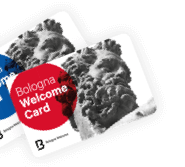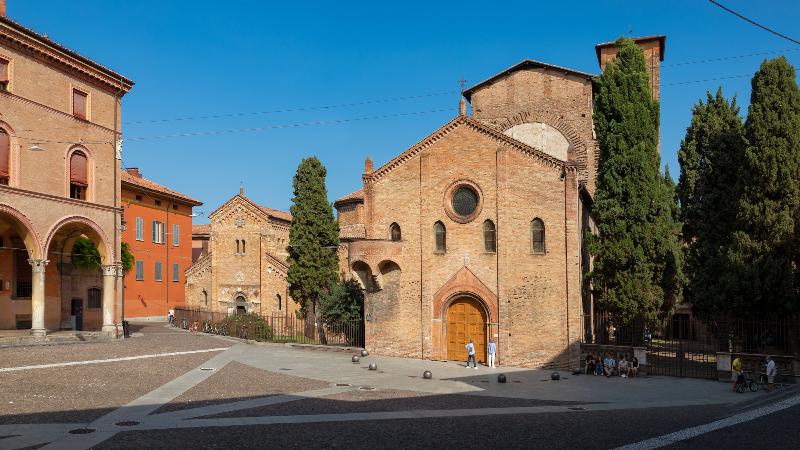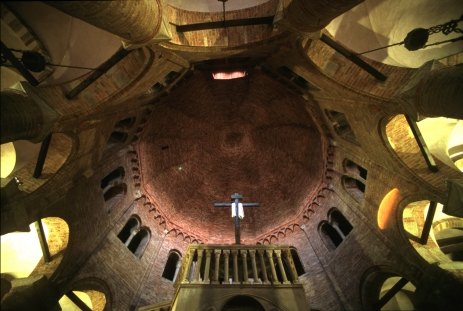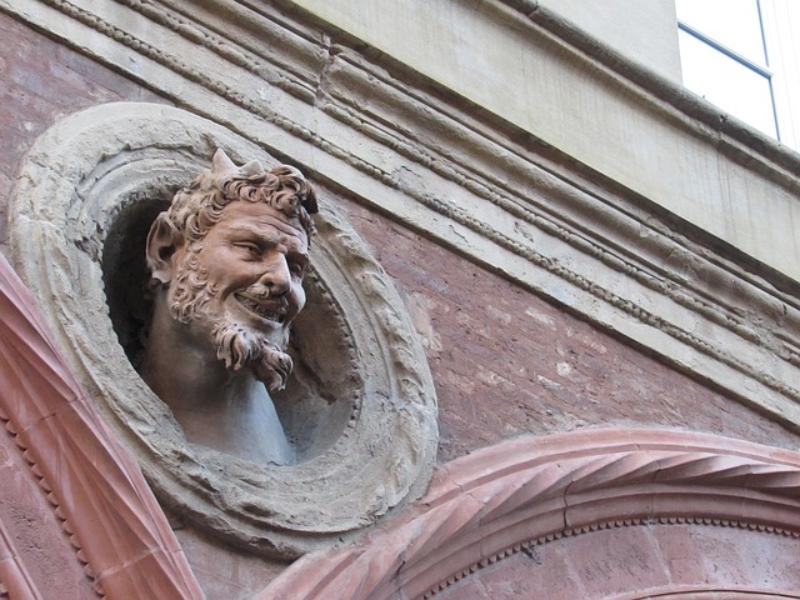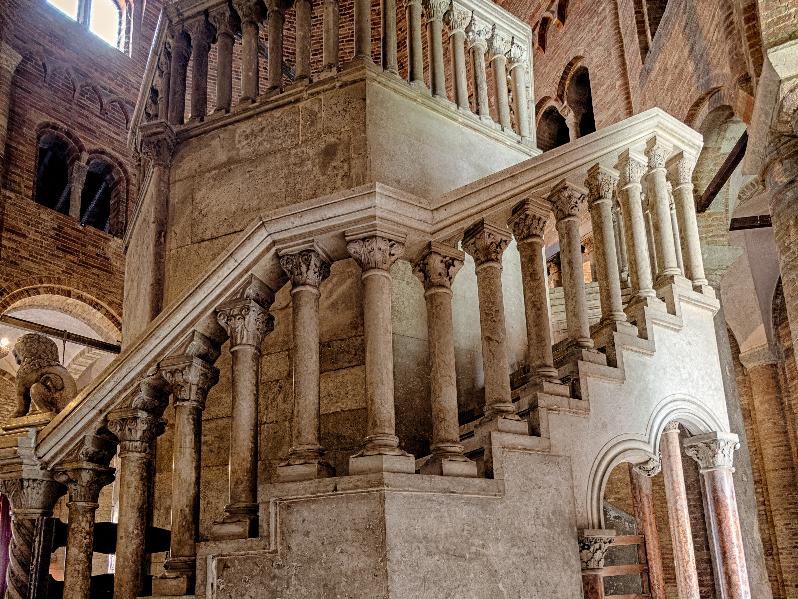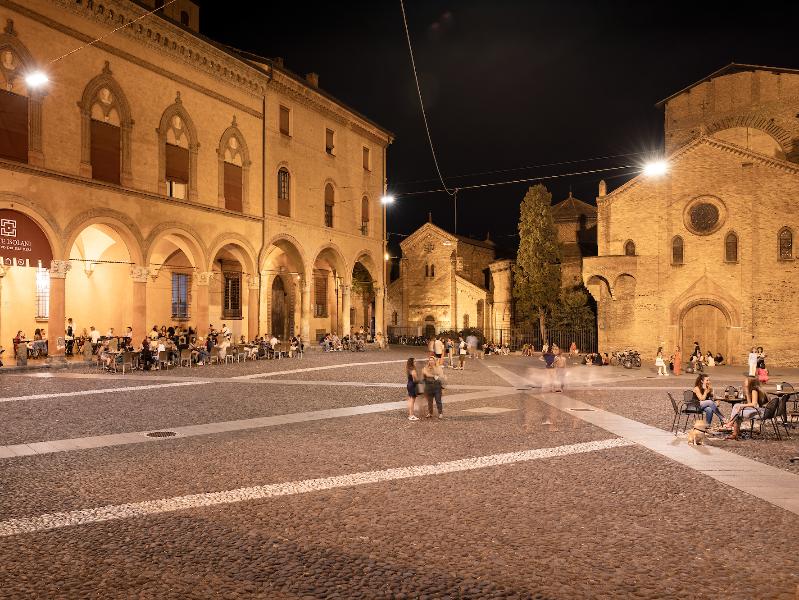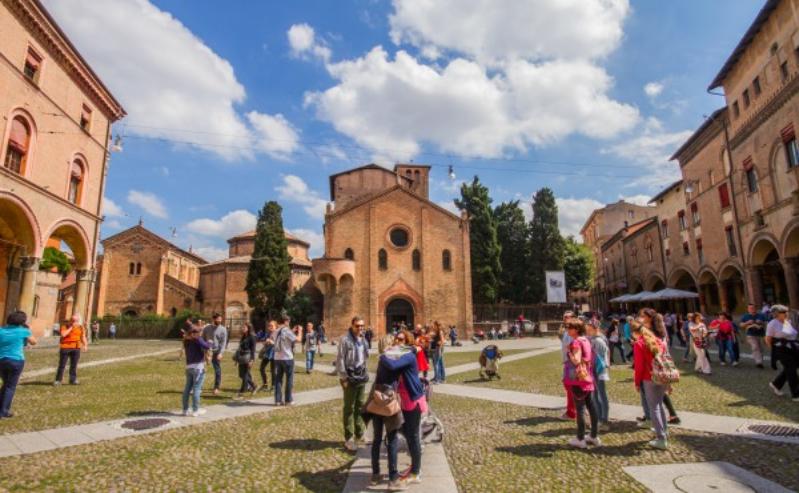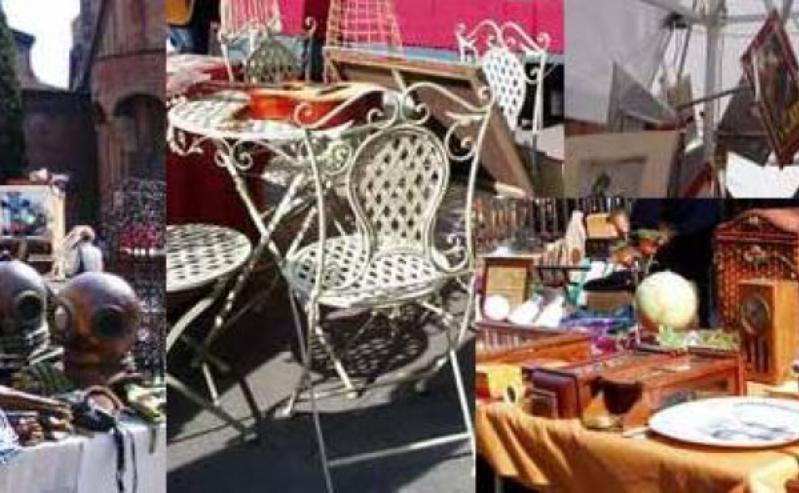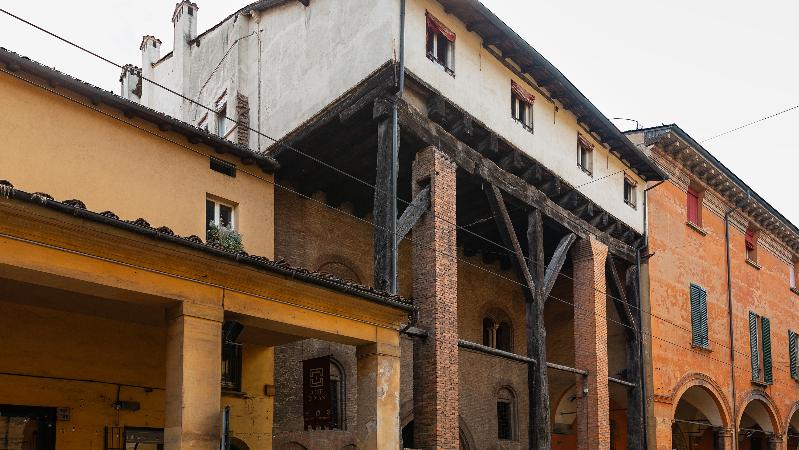Santo Stefano is the most unique complex in Bologna, as it is a true city sanctuary and the cradle of our ancestor’s faith. It is mainly known as “sette chiese” (“seven churches”) because it is the merger of multiple buildings erected in different eras.
The origins of the complex are controversial and disputed. According to the most accepted theory, it was built by Petronius on the ruins of a pre-existing pagan temple, flanked by a reproduction of the Holy Sepulchre in Jerusalem. Next to the sacellum with the remains of Bologna protomartyrs Vitale and Agricola we find the buildings erected by the Benedectines between the 10th and 13th centuries.
The square is overlooked by the Church of the Crucifix of Lombard origin, the Church of the Calvario, the Church of Saint Vitale and Saint Agricola and the Church of the Trinity (Chiesa della Trinità) restructured between the 12th and 13th centuries. Inside, you can also admire the Courtyard of Pilate (Cortile di Pilato) with a marble basin donated by Liutprand and Hildeprand, Kings of the Lombards, and the Benedectine cloister with a dual loggia (10th-13th centuries), one of the most superb creations in the Aemilian Romanesque style. There is also a Museum displaying paintings, sculptures and other artworks from various eras.
Map
Santo Stefano complex
Via Santo Stefano, 24 - 40125
Telephone: +39 0514983423
Email: santostefano@fratiminori.it
Site/minisite/other: https://www.santostefanobologna.it/
Entrance
From May 28 to September 30, 2024 for maintenance work, some sections of St. Stephen's Complex will be closed to the public
Free access with offering during opening hours.
Note groups:
- Groups of more than 20 people are invited to use visiting earphones;
- Groups over 40 people are invited to enter divided so as not to hinder visitation logistics.
Interests
- Art & Culture
Insights
The Museum
The museum was built after the restorations of the monumental complex of St. Stefano at the end of 19th century when arose the problem of where to collocate the devotional objects which after the restoration of the monumental complex hadn’t an appropriate place no more. The ancient Refectory of the Benedictine monastery was used as seat of the museum. When the Benedictine Olivetan monks took possession of the monastery the museum was moved above the ancient church of the Martyrium, and it remained there until 1980 when the artistic material was moved to the ground floor of the ancient sacristy adjacent to the Cloister.
The museum is made up of two rooms for a total of 150 meters of expository area. In the first room, that is in the 17th-century Chapel of the Benda, preserves works of Jacopo di Paolo, Vitale from Bologna, Lippo di Dalmasio, Simone Dè Crocifissi (such as the tempera-painting "Crucifixion and four Saints"), of Michele and Matteo and an oil on table representing the "Madonna with the baby and St. Giovannino" attributed to Innocenzo from Imola (16th century). The second room, which holds the 17th-century Chaple of Benda, conserves shrines (such as that one of St. Petronius’ head, a wonderful jeweller’s work of Jacopo Roseto made in 1380, and that one of the “Benda of the Virgin” of 1626), statues, bas-reliefs and canvas of 17th and 18th century (such as the "SS. Trinity" of Orazio Semacchini and "St. Martino resurrects the widow’s son" of Alessandro Tiarini); besides, a 13th-century fresco with the "Massacre of the Innocents" of Borlinghiero from Lucca that was part of the cycle which in origin covered the entire dome of the Sepulchre. ST. BOVO In the museum is preserved the wooden sculpture representing a male image difficult to identify. The work, dates to 13th and 14th century, after the recent restoring is a unique block (an oak-wood trunk) with the only addiction of the forearm that sustains the banner. Exactly from the banner representing an ox we can deduce that it concerns the features of St. Bovo, who is better known as St. Bonomio: Benedictine monk who had once lived in St. Stefano. Part of the description is taken from the book: "Museums of Bologna", Province of Bologna, Culture
Timetables
| Monday | 6pm-7:30pm basilica only |
| Tuesday | 9:30am - 12:30am / 2:30pm - 7:00pm |
| Wednesday | 9:30am - 12:30am / 2:30pm - 7:00pm |
| Thursday | 9:30am - 12:30am / 2:30pm - 7:00pm |
| Friday | 9:30am - 12:30am / 2:30pm - 7:00pm |
| Saturday | 9:30am - 12:30am / 2:30pm - 7:00pm |
| Sunday | 9:30am - 12:30am / 2:30pm - 7:00pm |
During the religious services (Mass time schedule here), the tourist visit could be limited or suspended. Opening times can be subjected to little changes.
